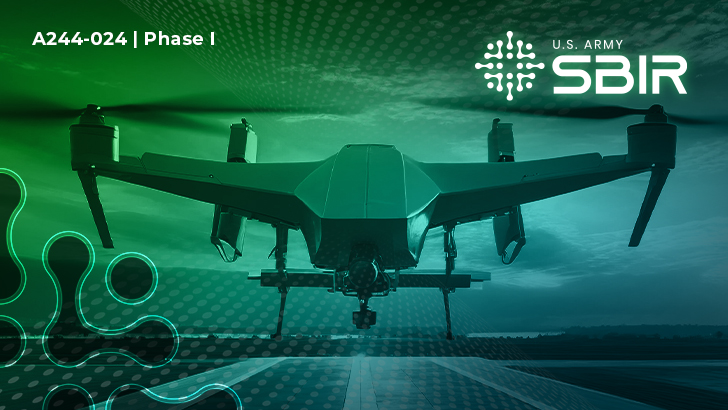

Objective
Vendors will develop components that lower the size, weight and power of thermal, bolometer-type longwave sensor payloads.
Description
Thermal longwave infrared capabilities are crucial to Army applications. Meanwhile, size, weight and power are of paramount importance for small Unmanned Aircraft Systems. However, such sensors are limited by payload constraints and often underperform because they cannot take advantage of the higher performance embedded hardware necessary for autonomy or other missions.
To address these challenges, the Army seeks to develop components that offer thermal payload weight reduction, while enabling it to increase its capabilities and retain low unit costs. U.S. Army Small Business Innovation Research Phase I will evaluate such components. The potential Phase II and Phase II sequential will take all the best components and demonstrate them in a single very lightweight module, 5–10 g including lens. All components should support high resolution sensors running at 30 Hz or faster.
Phase I
The Army will only accept Army SBIR Phase I proposals for a contract worth up to $250,000 over a 6-month performance period. During this time, firms shall design a proposed component with stakeholder input. The design does not need to be fabrication ready. However, it should show a thorough understanding of the technology, seek to drive down risk and earn a potential Phase II.
Phase II
Phase III
Submission Information
All eligible businesses must submit proposals by noon, ET.
To view full solicitation details, click here.
For more information, and to submit your full proposal package, visit the DSIP Portal.
SBIR|STTR Help Desk: usarmy.sbirsttr@army.mil

References:
Objective
Vendors will develop components that lower the size, weight and power of thermal, bolometer-type longwave sensor payloads.
Description
Thermal longwave infrared capabilities are crucial to Army applications. Meanwhile, size, weight and power are of paramount importance for small Unmanned Aircraft Systems. However, such sensors are limited by payload constraints and often underperform because they cannot take advantage of the higher performance embedded hardware necessary for autonomy or other missions.
To address these challenges, the Army seeks to develop components that offer thermal payload weight reduction, while enabling it to increase its capabilities and retain low unit costs. U.S. Army Small Business Innovation Research Phase I will evaluate such components. The potential Phase II and Phase II sequential will take all the best components and demonstrate them in a single very lightweight module, 5–10 g including lens. All components should support high resolution sensors running at 30 Hz or faster.
Phase I
The Army will only accept Army SBIR Phase I proposals for a contract worth up to $250,000 over a 6-month performance period. During this time, firms shall design a proposed component with stakeholder input. The design does not need to be fabrication ready. However, it should show a thorough understanding of the technology, seek to drive down risk and earn a potential Phase II.
Phase II
Phase III
Submission Information
All eligible businesses must submit proposals by noon, ET.
To view full solicitation details, click here.
For more information, and to submit your full proposal package, visit the DSIP Portal.
SBIR|STTR Help Desk: usarmy.sbirsttr@army.mil
References:
